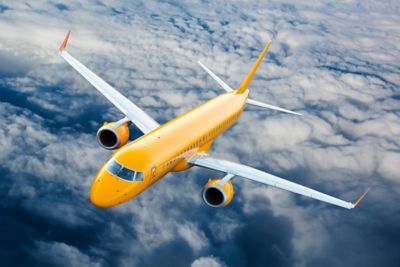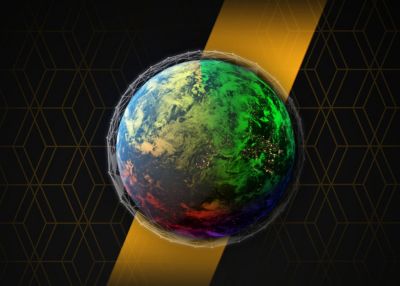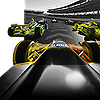ANSYS BLOG
August 8, 2022
Penn State Students Take on Digital Missions with Electronics Simulation
Students at Penn State are developing mission-ready simulation skills. By pairing electronics modeling software with adigital mission engineeringplatform, electrical engineering professor Gregory Huff takes his classes on a trip beyond the lab, the curriculum, and the electromagnetic (EM) spectrum. From antennas on the ground to radars in the sky, Huff teaches hundreds of students each semester how to useAnsys HFSS3D high-frequency simulation software and theAnsys Systems Tool Kit(STK) digital mission engineering platform in tandem to optimize emerging research in electronics, aerospace and defense, meteorology, and more.
With affordable access to the software through theAnsys Academic Program, Huff incorporates both technologies for a multifaceted teaching approach that cultivates a unique and desirable skill set for a wide range of students outside of the engineering majors.
Coupled with the program’s free resources for additional self-learning, students gain hands-on experience inside and outside of the classroom, which prepares them for realworld challenges — and missions — as their careers take off.
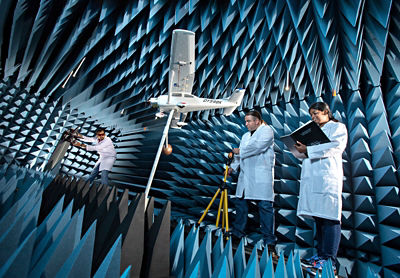
Professor Gregory Huff and a student examine a scale model of a single engine aircraft in an anechoic chamber. They are evaluating embedded antenna radiation patterns and linking performance studied in Ansys STK for in-flight scenarios involving remote agricultural sensor data acquisition and navigation-based sensor fusion.
Digital Mission: Possible
As students’ curiosity about STK grew due to the popularity of the digital mission engineering industry and accessible online certification programs, Huff introduced the platform into some of his classes to allow students to experience the software within an active learning environment.
The STK certification program offers three tiers, including level 1 STK certification, master level, and grand master level. It’s a sought-after program for many undergraduates as they stock their toolbox to stand out to recruiters after graduation.
First, Huff demonstrated the advantage of pairing HFSS with STK in telecommunications. From ground station antenna systems to satellite communications, Huff’s goal was to present students with tangible ways to understand and explore electronic transmission and connectivity.
“If you look at any text on satellite communications, it’s treated very lightly: ‘Here are some antennas, use these equations, and they’ll just work, or contact your local antenna person and good luck,’” says Huff. “I can write all that on the board, or we can use these really fabulous simulation software programs and platforms through the Ansys Academic Program, where real physics can be learned.”
Huff guided students through an evaluation of ground station antennas and phased arrays, which are used on spacecraft. Students generated antenna radiation patterns in HFSS, then imported the data into STK to analytically and visually demonstrate how a phased array would perform.
This bilateral analysis expanded research variables to include queries such as:
- Would the antenna work in a communication link?
- What is the impact of putting this antenna on a platform?
- Is there any blockage, interference, or scattering from other objects affecting the antenna?
Huff’s EM courses focus on communication radars and remote sensing, using STK to demonstrate both the communication and orbital mechanics components in an applied setting.
However, electronics engineering students aren’t the only learners gaining an edge. The courses entice students from a variety of science, technology, engineering, and mathematics (STEM) majors and interests, including aerospace and mechanical engineering, as well as meteorology.
团结不同领域更和保持的东西s interesting for all students, Huff assigns two projects each semester that involve real-life missions — one locally and one across the country. For a local reference, students study equitable broadband access to learn how to establish wireless connectivity to underserved populations in rural areas surrounding Penn State campus locations throughout Pennsylvania. With wide-ranging weather, geography, and topology, the state offers a host of areas and conditions to explore, from fog, rain, and snow to hills, mountains, and more.
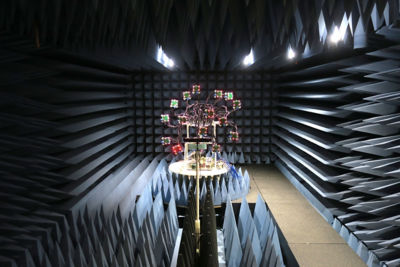
The MEDUSA platform developed in Huff’s laboratory to evaluate collaborative beam-forming techniques for UAV swarms using a computer vision-based system.
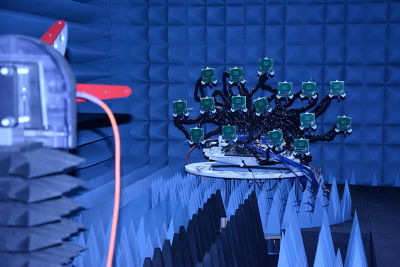
A close-up of the MEDUSA platform
Students investigate which areas and conditions will permit or prohibit select data links to determine how to improve satellite transmissions in different scenarios common to rural regions. The ultimate goal is to discover innovative ways to create strong links for highspeed connectivity while preventing or mitigating any interference.
The class analyzes transmitters on the ground and in the sky to assess which antennas can support communication links by using HFSS for any EM data and STK to “mission-plan around that,” says Huff.
“我们正在朝着5 g和不是越来越远y from wireless, so we should be teaching more students how we embrace wireless design and how to prepare for it,” he adds. “And part of that preparation is when we talk about the STK component.”
Expanding nationally for the second project, students learn how to use radio frequency identification (RFID) tags to track spotted lanternflies — an invasive species to the United States that was first detected in Pennsylvania in 2014. Due to their feeding behavior, the unwanted plant-hoppers present a threat to many agricultural crops and forest plants throughout the country and the world.
By pairing HFSS with STK for these projects, Huff says he can show students through real-life projects not only what EM can do, but also what simulation and technology can do — and further, that digital mission engineering is not just for extraterrestrial exploration.
“STK is giving us an opportunity to go full circle in demonstrating digital mission engineering: Here’s how you can do this and here’s what it looks like in an application,” he says. “And that doesn’t necessarily mean we’re using outer space for that.”
Huff reminds students that STK can be used to prepare and plan a wide range of simulation-powered missions right here on planet Earth. To demonstrate this on-the-ground usage, some of Huff’s students recently paired HFSS and STK to track and locate lost hikers.
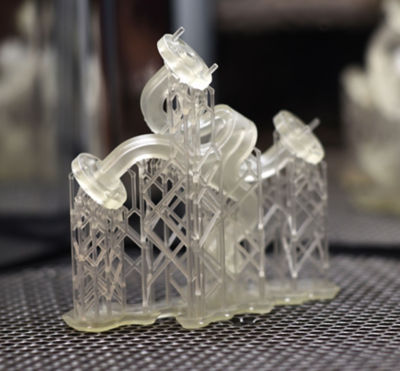
An additively manufactured curvilinear V-band waveguide hybrid coupler designed in HFSS shown before post-processing to remove supports and create conductive walls using pressure-driven electroless metallization.
Virtual Simulation Tools for Emerging Careers and Fields
According to Huff, academic simulation integration is crucial to preparing students for careers in engineering, as well as other related fields.
“We need to augment or complement the traditional classroom experience with some type of hands-on experiential learning that reinforces the theoretical and traditional framework that we have in place for textbook learning,” says Huff. “In EM, this is a little bit more of a challenge because the cost of equipment is high, but having access to Ansys’ suite of design tools is a game-changer. We can do a lot of the research that we want to do in the lab a priori, then come in and really put your hands on it and measure it, while also walking through what happens if I change XYZ parts of this. Without the Ansys Academic Program, we would not be doing this.”
So far, Huff’s students have embraced the tools and are excited to study at home through the Ansys Learning Hub, the Ansys Learning Forum, and free Ansys student version downloads. In fact, Huff says the Ansys portion of the syllabus is usually the only part that students have read before the first day of class, often having already downloaded and explored the software at home.
这不仅参与装备的学生阅读iness and confidence, but also provides them with a skill set that is sought out by potential employers. Huff views the relationship between academia and industry as symbiotic.
“我们已经在工业人专门来to find graduate students because they know when students come out of this program, they are knowledgeable and are using state-of-the-art industry-standard design tools, simulation tools, measurement techniques, and that they have a strong theoretical background to go along with it,” says Huff. “One key thing that separates Ansys, and a few other companies that have a similar philosophy, is that we’re not here to be a revenue-generating machine; the goal is for us to train students and do it in the best way possible, using the most advanced and timely tool sets that we can have.”
Many of Huff’s former students have gone on to work at national labs and companies, including Ansys. Huff also facilitates post-graduate research projects to help students transition into their careers with deeper exploration. Two recent projects applied HFSS to develop origami-inspired antennas and predict the radio frequency (RF) performance of EM devices for fabrication in additive manufacturing (AM).
With access to additional tools through the Ansys Academic Program, Huff plans to apply more multidisciplinary integration in three key emerging areas: equitable wireless connectivity, hypersonic vehicle design, and 3D printing.
As mentioned earlier, Huff integrates HFSS with STK to study equitable broadband access and approach EM from a social science perspective. As research deepens in this area, Huff plans to incorporate Ansys structural analysis tools, such asAnsys Mechanical, to examine how architecture also affects broadband access. Similarly, Huff will integrateAnsys Fluentfor its computational fluid dynamics (CFD) capabilities to assess aerodynamic heating in projects involving the antenna design of hypersonic vehicles.
Huff would like to exploreAnsys’ AM and 3D printing toolsas well. In collaboration with a 3D printing company, Huff currently has AM specialists review his students’ HFSS EM designs to provide feedback so students can optimize and enhance the designs for 3D products. This has opened up a new area of interest for many students as they create unique structures and shapes, including “crazy and fantastic contraptions that work,” according to Huff.
The enthusiastic professor recently shared his support of academic simulation integration at Ansys’ annual virtual Simulation World 2022 conference on May 18 during the focused track “How Academia is Shaping the Future.”






